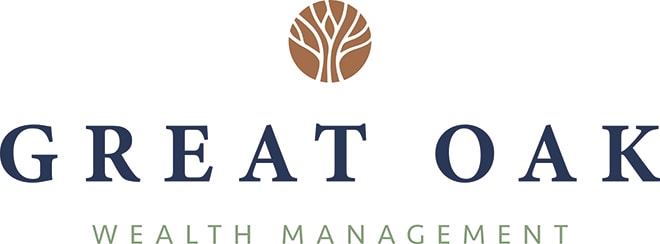How are you managing your financial life? For many, thinking about investments, savings, or insurance is overwhelming. But taking control of your financial literacy and making careful planning work for you is crucial to getting the best out of your resources.
Whether you’re just starting to save for retirement or looking for a fiduciary financial advisor to help you make smart investment decisions, it’s important to know about various products and options.
At Great Oak Wealth Management, we cover the gamut of financial topics, including retirement savings, cash-flow management, risk tolerance, investing, and more. Remember, it’s never too early or late to start taking control and planning for a more secure financial future.
Once your financial goals are in place, and you find yourself in the wealth creation groove, you can focus your time and energy on doing the things that bring you joy.
A solid understanding of your financial situation and feeling literate and in control of your money moves are crucial to your financial success. If you’re feeling confused or overwhelmed, working with a financial advisor is a great way to take positive action and build your path to financial success.
10 Steps to Help Build Your Financial Literacy
#1. Future-Proof Your Retirement Plan
Ask yourself: Are you saving enough for retirement? If you are, pat yourself on the back. If not, you are not alone – many people fail to save sufficiently for a comfortable retirement.
This is a concerning trend considering that retirement could last 30+ years or more. This means you could live half of your adult life in the so-called golden years. Consequently, you may require a significant amount of money to sustain a comfortable lifestyle for longer.
Fortunately, you don’t have to wait until retirement is knocking at your door to determine your needs and set a plan in motion to future-proof your retirement years. Calculate the age you can retire at with our useful guide.
#2. Cash Flow Is Your Retirement Plan’s Best Friend
Saving is just one part of the retirement equation. To build a robust retirement plan, you want to consider your expenses – and this means paying attention to current and future outlays.
Improving your cash flow is essential for a comfortable retirement, particularly if you consider that a successful retirement doesn’t only hinge on good budgeting. During retirement, you will want to focus on the expenses that matter the most to you, reducing outflows that don’t add to your hard-earned leisure years. You need to start with five simple yet effective steps, which you can learn about here.
#3. You Can’t Anticipate Change, but You Can Prepare for It
Investment plays a crucial part in successful financial planning and goal setting. One unmissable consideration when crafting a profitable plan is to account for uncertainty.
Getting this right starts with an honest assessment of your tolerance for investment risk – after all, only you know what keeps you awake at night! Since diversification alone isn’t enough, you’ll want to implement some strategies to cover and offset risks.
#4. Invest Smart and Reap Long-Term Rewards
For many, investing can be intimidating – especially for financial rookies. Yet a few simple rules can help make it less daunting. Most investors are aware that cutting losses is just as important as being able to remain resolute during rocky market conditions, but the secret is anticipating which stance you should adopt at any given moment.
Because life – and investing – doesn’t always run according to a set playbook, your investment plan should never be set in stone. It needs to change as your life does. We’ve outlined six rules of investing to help you make informed decisions and achieve your financial goals.
#5. Get Serious About Your Financial Goals
Reducing costs, eliminating debt, creating wealth, and securing retirement are common financial goals. But you won’t achieve these ambitions with a haphazard plan. Instead, having a comprehensive, effective financial plan and the guidance of the right financial advisor would be best.
Financial advisors can provide you with proven strategies to reach your financial goals sooner, which makes them an indispensable partner. When finding the right advisor, it is important to note that financial advisors operate under a range of fee structures, so it’s best to know what you are dealing with upfront. Please read our guide on choosing the right financial advisor for you for some essential insights.
#6. Make the Most of Your Social Security Benefits
Social Security is just one tool in your retirement income strategy, and you’ll want to make the most of it. With many things in life, delaying the reward can yield additional benefits. Still, unfortunately, there isn’t a clear-cut game plan when it comes to Social Security.
Will you need to claim benefits early, or can you wait until your full retirement age or delay it? There are pros and cons to each approach. To help you decipher the best option, consult this brief guide.
#7. Life Insurance, for When Life Doesn’t Turn Out as Expected
When it comes to life insurance, finding the sweet spot to provide financial security to your loved ones in the event of your death requires specific considerations and a full assessment of your family’s needs now and in the future.
Each situation is unique, and you’ll want to consider the worst-case scenario to cover your family for every eventuality. The question that should underscore this decision is: Do you know how much life insurance you really need?
#8. Raise Financially Smart Kids
When it comes to building financial literacy, it’s never too soon to start. For those whose financial education started later in life, catching up can seem like a darn big hill to climb, which is why teaching children financial responsibility and good savings habits from an early age is so important.
The question many parents ask us is where to start. At Great Oak, we have put together a comprehensive guide to lead children into financial responsibility, from setting up a savings account to learning the value of money. If you want to help your children become financially savvy, check it out!
#9. Make the Most of Retirement Savings Accounts
Planning for retirement isn’t only about saving. It is about financial literacy, strategy, and choosing the most efficient and effective financial products for your money.
Both a traditional Individual Retirement Account (IRA) and a Roth IRA allow you to save for retirement while enjoying various tax advantages. Where they part ways is in how and when those benefits kick in.
For the low-down on the key features and rules of these two popular retirement options, we recommend you read: Learn which type of IRA is the right one for you.
#10. Ensure Your Financial Advisor Is Working in Your Best Interests
No matter the financial landscape or the state of uncertainty at any given moment, it is impossible to erase risk from investing. However, what you can do to ensure your peace of mind is work with a financial advisor who will act in your best interests.
There are different types of financial advisory services, and they operate under various models. Ensure you know what to look for when finding your fiduciary advisor to ensure your investments align with your goals and needs.
Move Forward with Confidence
So now that your financial literacy has been vastly improved, why not go up a level by working with a professional who can help you build a financial plan that aligns your money with the life you truly want to live.
If you want the insights of an expert team with a passion for family, wealth management, and living a life of fulfillment, don’t hesitate to contact us. Together, we can craft your plan for financial security and peace of mind.








